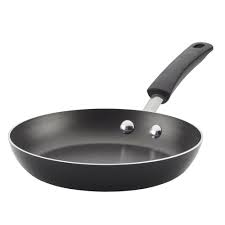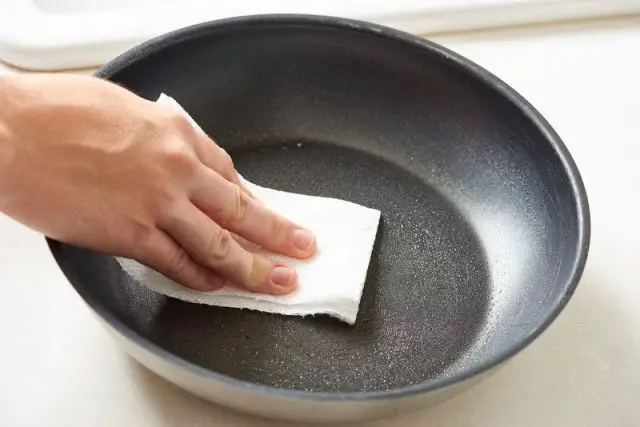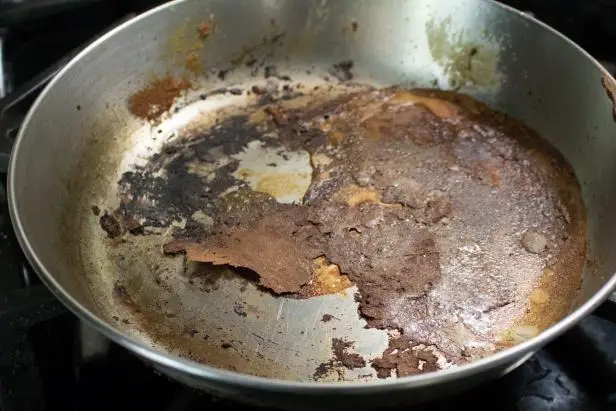How to Clean a Nonstick Pan

Is there a recommended way of cleaning nonstick pans? Do you know the proper way of cleaning a nonstick pan?
Most people do not know, leading to everyone’s best nonstick pan getting ruined. Although cleaning a nonstick pan is not that difficult, there are some guidelines and rules you need to adhere to.
The thing is, most foods do not often stick to these appliances; but if you do not clean your pan frequently, you will begin to see burned residue on them.
For this reason, your nonstick pans will become difficult to clean up with time since the residue will continue burning every time you cook with your nonstick cookware. This will eventually lead to the peeling of the nonstick coating.
Here are some simple tips you can use to clean a nonstick pan:
-
Clean pans by hand after using them
Avoid using the dishwasher for cleaning your pans, even if it is labeled as safe to wash in the dishwasher. This is partly because of the risk of the pans being scratched or dented by other utensils in the dishwasher.
Use a soft, mild soap and a soft sponge or cloth to clean your nonstick pan. Then, use lukewarm water (not hot water) for rinsing.
You should also note the following tips:
- You can also clean your pan using a soft brush or nylon sponge.
- If you just use a towel for wiping your pan rather than wash it, the stuck-on residue will cook and stain when you use the pan later on.
- Hot temperatures and harsh dish washing detergents will shorten your nonstick pan’s life.
-
Use warm, soapy water to soak your pan
You should put a tablespoon of dish washing soap into your pan. Put the pan in a sink that’s filled with warm water.
Allow the pan to soak for 10 – 12 minutes, and then wash it again using your hands and a soft sponge. The dish washing soap helps get rid of bacteria as well as helps in breaking up residue and bacteria.
-
Use a baking soda paste for scrubbing gunk, if necessary
Create a paste by mixing equal parts of baking soda and water. After that, dip a sponge or non-metallic brush into the mixture and gently wipe it onto the pan’s interior and sides.
Let the paste sit for 15 minutes. Then, remove the paste by rinsing the pan thoroughly.
Avoid the following:
- Don’t scrub or rub your pan directly with dry baking soda as it is abrasive.
- Don’t scrub your nonstick pan with a metallic sponge or steel wool.
-
Heat salt and oil in your pan
Get vegetable-based oil and pour 2 tablespoons into your pan. Set the heat to medium to heat the pan. Add 3 tablespoons of salt into your pan.
After that, lift your pan from the heat and shake it until the salt and oil are uniformly distributed. As soon as your pan has cooled, you can handwash it.
If you have sea salt you can use it. If not, table salt will suffice as well.
-
Instantly dry the pan by hand

Never store your pan away while it is still wet. Make sure your pan is completely dry before you store it to prevent rusting. You can use a soft dish rag or paper towels to dry it off.
Removing residue
Your nonstick pan can have residue if you don’t wash or rinse it immediately. When you see stubborn food scraps on your pan, use water and baking soda to make a paste.
Use the paste to cover the residue and allow it to sit for one minute. Then use a soft sponge to scrub. The food residue will often come off immediately. Thereafter, use a clean cloth to rinse and dry the pan.
General Tips
- Check out the specific instructions for your pan before you place it in your dishwasher. Some pans aren’t dishwasher safe.
- You should use wooden or rubber utensils on the nonstick pan when cooking.
- Don’t use metal utensils on the nonstick pan. The metal can scratch off the nonstick coating or Teflon. Not only will this reduce the pan’s functionality, but it will also cause chemicals from the coating to mix with your meals.
How do you clean a burned nonstick pan?
Nonstick pans have been a game changer in our kitchens when it comes to food preparation.
While nonstick pans are generally easy to clean, there might still be moments when you will end up with burned meals stuck to your nonstick surface.
The pan’s nonstick coating is polytetrafluoroethylene, popularly called Teflon. The coating will help prevent meals from sticking to your pan, which makes cleaning easy.
If you do not use your nonstick pan properly, your Teflon pan can end up with crispy, burned meals stuck to its surface.
There are some reasons why a nonstick pan might have things stuck and burned to its surface. The major cause is using high temperatures for cooking with the pan.
This will also occur if there are small scratches in the pan’s bottom, which let food particles to become trapped.
Here’s how you can clean your burned nonstick pan:

It does not matter if you are a beginner or a professional chef, sometimes, you’ll end up having burned food stuck to the pan.
Burned nonstick pans need heavy cleaning; unfortunately, dishwashers are also not a solution for burned pans.
If this occurs, do not panic, and do not even consider tossing the pan in the dishwasher or scrapping off the food using sharp objects such a metal spoons, forks or knives.
Rather, adhere to these two options listed below to clean burned food off a nonstick pan. The pan will look and feel new once more shortly:
Using baking soda
Baking soda has an ingredient which helps it work as a mild abrasive to deal with those hard-cleanup chores.
Begin by using water to cover your pan’s bottom. Then, create a thin paste by adding baking soda generously to the water.
Allow the mixture to sit in your pan for a couple of hours; rinse and wash like usual.
You can also use baking soda for removing those hard to remove stains. All you need to do is bring to boil ½ cups of water with four tablespoons of baking soda in your pan. After cooling the pan, proceed to rinse it.
Do not use cold water to cool the pan as it might warp. Then, use baking soda and a sponge or a soft non-stick safe brush to scrub the stain out.
Use white vinegar
Use of white vinegar is another natural commonly used method of cleaning nonstick pans and pots.
Fill the nonstick pan with ½-cup white vinegar and water and boil the mixture. The burned-on residue will begin to come off and float.
Turn the heat off and after cooling, remove the loose food residues with a paper towel. After that, pour the water and clean the pan in soapy, warm water.
How to clean a nonstick pan that sticks
The header here may sound like an oxymoron since the name nonstick suggests that the pan should not stick. For various reasons though, food may end up sticking on nonstick pans and pots.
Regular stirring and cooking at very high temperatures might result in food sticking. You may also have residue build up because of using a nonstick oil spray and tiny scratches on the pan’s surface which may lead to your food sticking.
The quality of the nonstick pan and the mode of handling during cleaning and washing could be other reasons why a nonstick pan may have food sticking on it.
All these factors may result in food sticking to a nonstick pan and therefore the need to apply the right cleaning method to reduce the sticking.
Adhering to cooking instructions by manufacturers, using the right utensils and cleaning without delay will all help in prolonging your pan’s life.
By adhering to the correct practices every time you’re using your pans, cleanup is easy. When an infrequent accident takes place, clean it up without delay. After cleaning, keep in mind the useful tips to avoid food from sticking on your pan; prevention is always better than cure.
Seasoning your nonstick pan
To start with, why do these utensils begin to stick? Mostly, coated pans are a breeze to clean up; however, they do get scratches and stains, and eventually, they become sticky because of grease and other food particles building up in these scratched areas.
This can negatively affect the efficiency of the nonstick surface. Fortunately, all you should do to improve this issue is to thoroughly clean up your pan using the right method and re-season any scratched and stained areas.
To do this, follow the steps below:
- Mix ½ cup of white vinegar, two tablespoons baking soda and one cup water in a pan that has lost its nonstick quality.
- Then, set on your stove and heat for ten minutes until it comes to boil. Wash the nonstick pan or pot using normal washing procedure by hand.
- Re-season it by rubbing vegetable oil on the surface. You should rub the oil on the pan at room temperature or when it is lukewarm; this will help prevent it from sticking later on.
By following the simple steps above, you may get back some of the nonstick surface quality.
You should however not expect the nonstick cookware to go back to its original state since the wear and tear overtime definitely reduces the nonstick abilities of the pots and pans.
